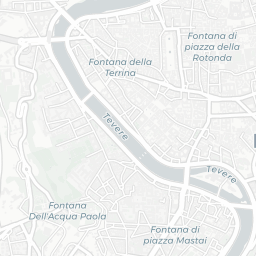About Capitoline Museums
The bronze statue of the she-wolf nursing Romulus and Remus immediately captures attention. Known as the "Lupa Capitolina," it symbolizes the legendary founding of Rome. The twins, added during the Renaissance, rest beneath the wolf, whose sharp gaze and tense posture suggest both protection and wildness. This iconic piece is just one of the treasures housed within the Capitoline Museums, the world’s oldest public museum complex.
History of the Capitoline Museums
Established in 1471 when Pope Sixtus IV donated a collection of bronze statues to the people of Rome, the Capitoline Museums represent the birth of public art collections. Located on the Capitoline Hill, the museums occupy two grand Renaissance palaces designed by Michelangelo: the Palazzo dei Conservatori and the Palazzo Nuovo. These buildings, connected by an underground gallery, house artifacts spanning thousands of years, from ancient Rome to the Renaissance.
Plan your perfect trip to Rome with Travo! Download now and start exploring.
Artistic Highlights
The museums are home to masterpieces like the "Dying Gaul," a marble sculpture that captures the poignant moment of a warrior’s final breath. The "Equestrian Statue of Marcus Aurelius," a rare surviving bronze from antiquity, dominates the piazza outside and reflects the emperor’s wisdom and authority. Inside, the "Capitoline Venus" enchants visitors with its delicate beauty, embodying the ideals of classical art.
Stories in Stone
The Capitoline Museums preserve the history of Rome through their vast collection of inscriptions, reliefs, and statues. The "Colossal Head of Constantine" is a striking remnant of a once-massive statue, symbolizing the emperor’s power and the shift toward Christianity in the Roman Empire. The "Tabularium," an ancient archive integrated into the museum, offers breathtaking views of the Roman Forum, connecting the artifacts to the city’s living history.
Details That Speak
Notice the intricate carvings on the sarcophagi, which tell stories of Roman life, death, and mythology. The Capitoline Brutus, a bronze bust, is thought to depict one of the founders of the Roman Republic, his stern expression embodying the ideals of liberty and justice. The mosaics, with their vibrant colors and detailed patterns, reveal the artistic sophistication of ancient Rome.
Living History
The Capitoline Museums are not just a repository of artifacts but a living connection to Rome’s past. Visitors walk the same halls as Renaissance scholars and modern historians, exploring the layers of history that define the Eternal City. The museums continue to inspire, offering a space where art, history, and culture converge in the heart of Rome.
Present-Day Significance
Today, the Capitoline Museums serve as a cultural hub, hosting exhibitions, lectures, and events that celebrate Rome’s heritage. They remind us of the city’s enduring influence on art, politics, and philosophy. Whether marveling at ancient sculptures or gazing out over the Forum, visitors experience the timeless legacy of Rome, preserved and celebrated within these historic walls.
Location
Piazza del Campidoglio, 00187, Rome



